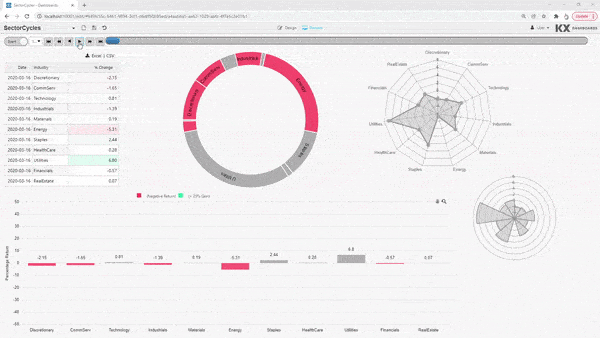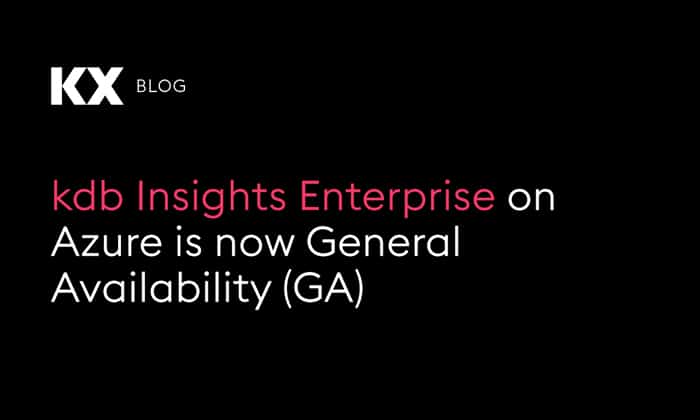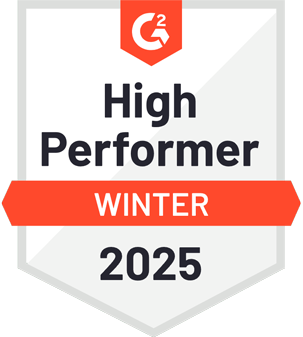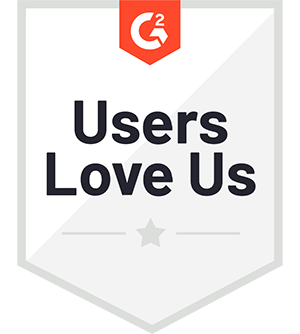
- Products
- /kdb Insights
kdb Insights
Make intelligent decisions with all your data, no matter the speed of change.
Introducing kdb Insights
- The kdb Insights portfolio is a cloud-native, high-performance, and scalable analytics platform for real-time analysis of streaming and historical data.
- Businesses lose performance due to slow analytics, spend more because of high infrastructure costs, and forego efficiency because of increasing data volumes.
- With integrated data management and streaming analytics, kdb Insights helps you make intelligent decisions no matter how much data you have or how quickly it changes.
Benefits
Speed and scalability
Meets your largest data needs in the most demanding environments.
Cost-effective
Achieves lower TCO, optimized for data storage, performance, and time-series workloads.
Fast and flexible
Built-in functions for handling time series information provide speed and simplicity when working with data.
Multiple languages
Supports our native language q, as well as Python, Java, C#, C++, Rust, R, and open-source libraries for others.
Optimize query speed
Columnar design delivers greater speed and efficiency than typical relational databases.
Parallel processing
In-memory compute automatically distributes database operations across CPU cores.
Faster decision-making
Excels at processing both historical and real-time data, allowing you to make informed decisions quickly.
Efficient
Small memory footprint exploits L1/L2 CPU caches up to 100x faster than RAM.
Additional features
Enhance your kdb Insights experience with Dashboards.
Dashboards
KX Dashboards is an interactive data visualization tool that enables non-technical and power users to query, transform, share, and present live data insights.
Support collaboration and communication throughout your organization with out-of-the-box templates, or choose from over 40 drag and drop widgets to fully customize your visualizations.

Use cases
REAL-TIME INGEST AND TREND ANALYSIS
Empower proactive decisions with live data insights
Efficiently query and analyze data to identify trends and patterns in real-time, empowering proactive measures before critical problems occur.
PRE- AND POST-EVENT ANALYSIS
Understand the impact of every event with precision
Segment historical data before and after events to understand the impact of specific incidents or changes, allowing for strategic and tactical adjustments.
OPERATIONAL VISIBILITY AND MONITORING
Enhanced monitoring for optimized performance
Access and interpret live operations data to proactively identify anomalies, assess changes, and detect faults.
Offerings
Insights Enterprise
A fully integrated and scalable analytics platform designed for time series data analysis. Ideal for data teams, Insights Enterprise delivers fast time-to-value, works straight out of the box, and will grow with your needs.
Insights SDK
A toolkit for creating custom time series analytics applications. Intended for application development teams with skills in architecting, implementing, deploying, and managing distributed analytic systems.
Compare offerings
Insights Enterprise
A fully integrated and scalable analytics platform designed for time series data analysis. Ideal for data teams, Insights Enterprise delivers fast time-to-value, works straight out of the box, and will grow with your needs.
Insights SDK
A toolkit for creating custom time series analytics applications. Intended for application development teams with skills in architecting, implementing, deploying, and managing distributed analytic systems.
Capabilities
Management Console
Low/No Code Experience
Real-Time Dashboards
Authentication & Authorization
Encryption in-flight
Development Lifecycle
Auto Scaling
Ready to get hands on?
KX Academy
Discover new skills and advance your career with free, interactive, on-demand training.
KX Community
Connect with experts and get to grips with our world-leading real-time data analytics technology.
Documentation
Access all the documentation you need to understand the kdb Insights offering in depth.
Demo the world’s fastest database for vector, time-series, and real-time analytics
Start your journey to becoming an AI-first enterprise with 100x* more performant data and MLOps pipelines.
- Process data at unmatched speed and scale
- Build high-performance data-driven applications
- Turbocharge analytics tools in the cloud, on premise, or at the edge
*Based on time-series queries running in real-world use cases on customer environments.
Book a demo with an expert
"*" indicates required fields









